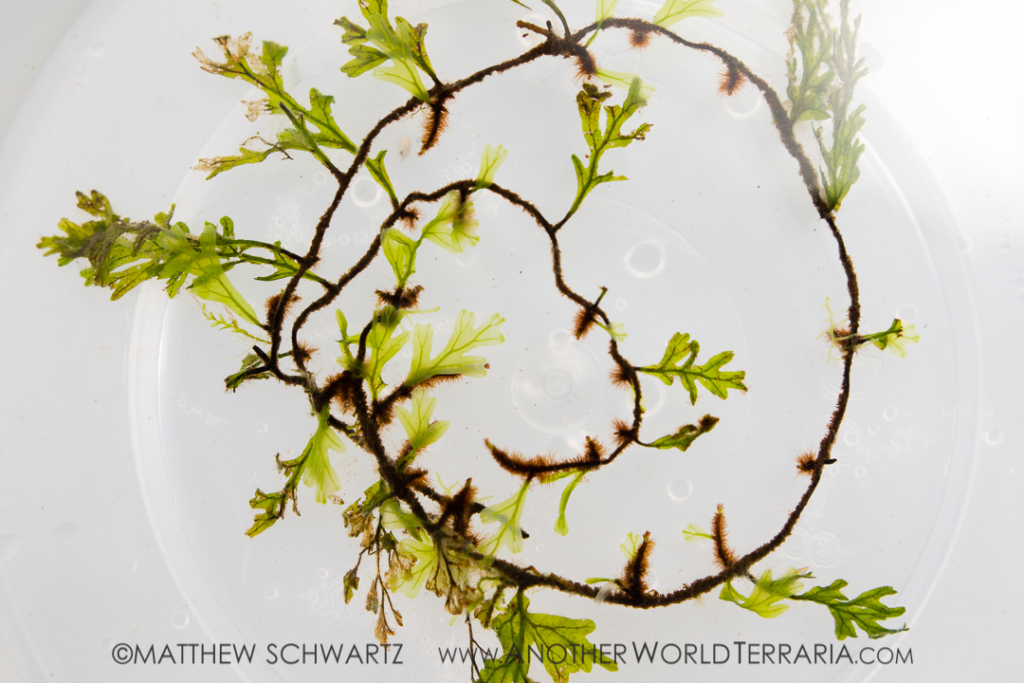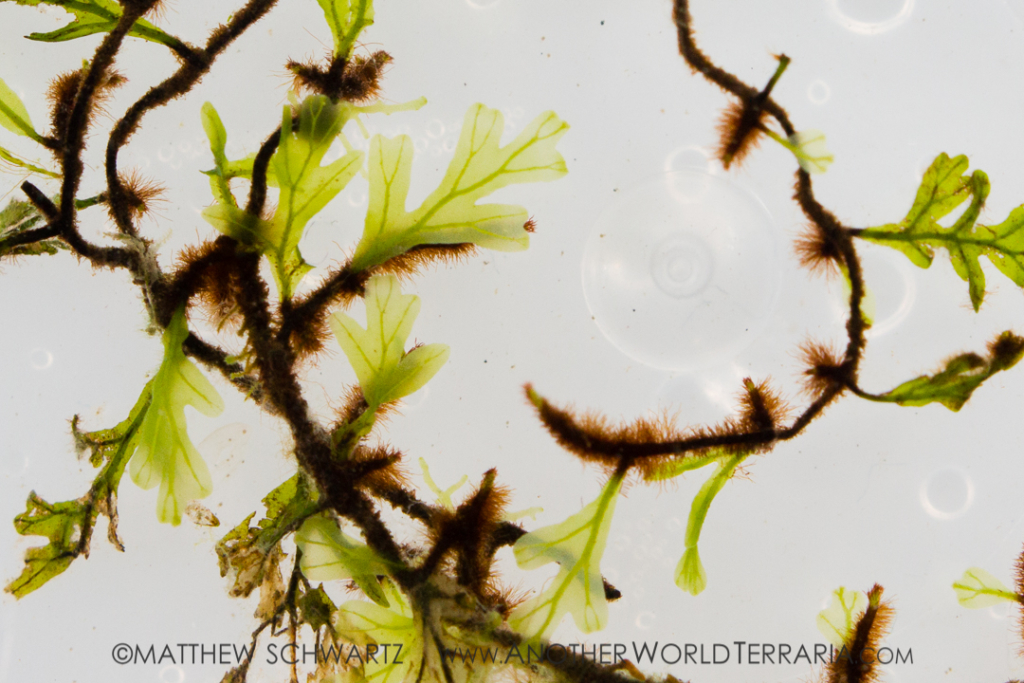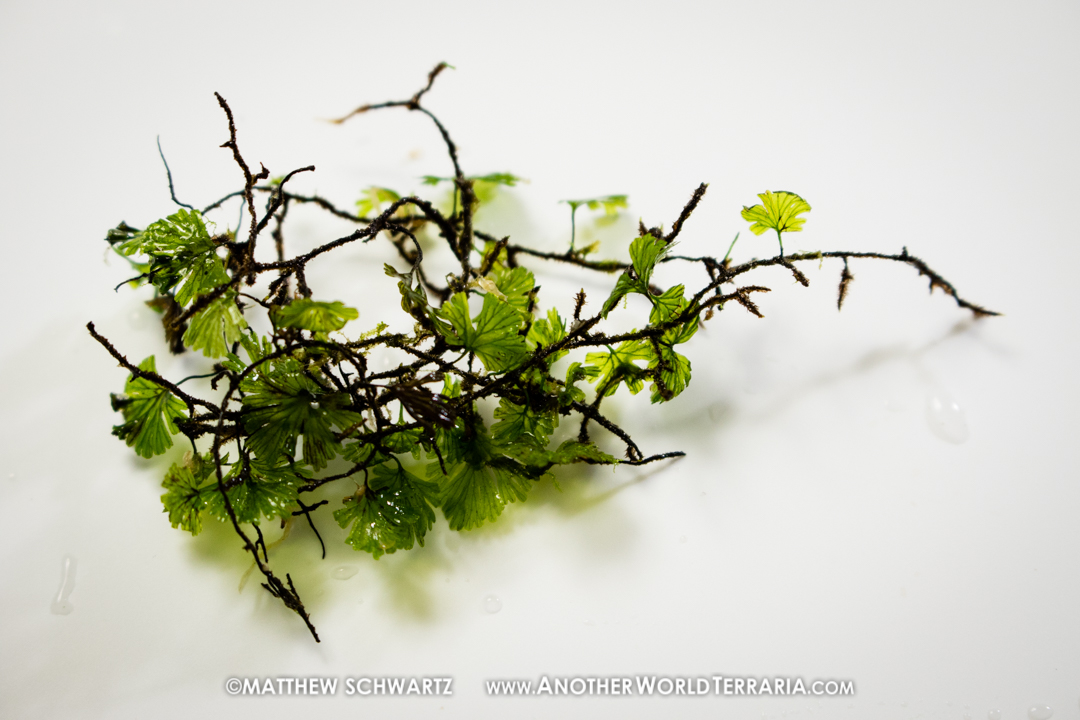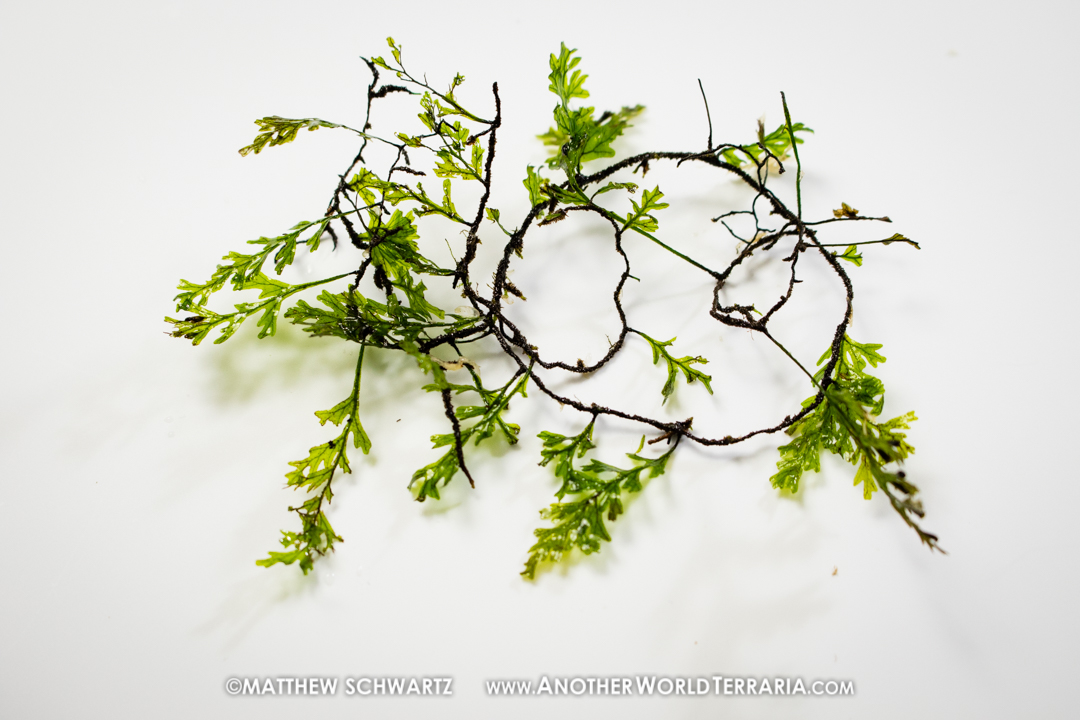Prompted by some aquaria hobbyists getting crazy with filmy ferns, I decided to do my own experiment.
Background Story
I’ve seen some intriguing photos online of various species of filmy ferns being grown submersed in aquarium culture. The images were mostly posted by hobbyists in European countries, who tend to get access to some amazing plants (which often make me jealous), and who also tend to be more experimental in their approaches to the hobby.
There are many terrestrial plants which are offered in the aquarium hobby as aquatics, but they are not truly, and over time will die. I was suspicious of that when I saw the online photos of “aquatic filmy ferns.” However, when I thought more critically about filmy ferns being submersed, it made sense. That’s because they grow in wet environments, sometime even in the constant splashing of waterfalls and dripping cliffs. It seems plausible that some species may creep their way into shallow stands of water, or into the continuous flow of a waterfall or stream, or be seasonally flooded.
With the above information and examples in mind, I felt compelled to try growing some filmy ferns submersed.
The Experiment
I have 3 species of filmy ferns as of December, 2017, all of which are tiny:
Crepidomanes minutum (⅜” fronds) – first photo
Hymenophyllum sp. (¾” fronds) – second photo
Trichomanes reptans (1 ¼” fronds) – not pictured
I put portions of each of the ferns in plastic deli cups and filled them with distilled water. After snapping on the lids, I placed them in medium light. I manually changed the water every few weeks, using a large syringe with flexible hose attached. There was no water movement, oxygenation, or other such provisions.
Unfortunately, I didn’t document the exact date that the experiment was started, nor did I take photos at the beginning, but I believe it all began in early September, 2017.
The Results
The Crepidomanes and Hymenophyllum, as of December 2017, have been submersed for about 3 months, as best I can recall. The Trichomanes has been submersed about 3 weeks. All of them are doing superbly, with healthy and strong rhizome and foliage growth. I am loving how green and fresh they look.

Submersed Hymenophyllum species filmy fern
The aquatic growth is morphologically similar to terrestrial growth, but there are slight differences. The underwater fronds tend to look more basic or “immature” and are also much more translucent than terrestrial ones, and the rhizomes look more shaggy. The newer, submersed growth can be seen in the photos as being very bright, lime green, and as bushy rhizomes with orange-ish hairs.

Close up of submersed Hymenophyllum, showing fresh frond and rhizome growth
In the photos, any fronds that are darker green or have brown or black patches, are terrestrial growth from before the submersion experiment. In fact, the deterioration is preexisting, and doesn’t seem to be caused by being underwater. The healthy tissue of those leaves grown above water appears to be unaffected by being submersed for long periods of time (months) – if anything, it seems to rejuvenate them and make them look even better.
Thoughts and Next Steps
Now that I’ve seen firsthand that filmy ferns can grow underwater, I am imagining a small jar aquarium with plants attached to a piece of bogwood, perhaps with their fronds swaying gently in the flow of a small water pump. Many other ideas and new possibilities have presented themselves.
I’d also like to obtain some of the species being grown by foreign aquarists, and try transitioning them from submersed to emersed (surely a far more challenging task than vice versa).
I’m also wondering how big of a filmy fern species you can get to grow underwater. It seems logical that small species, such as those subjected to my whims in this experiment, would work well, but I wonder if larger species would also grow.
The experiment’s surprising success has excited me to continue working with other filmy fern species in a submersed state, and to create new display terraria and aquaria featuring them. Stay tuned for future updates!






